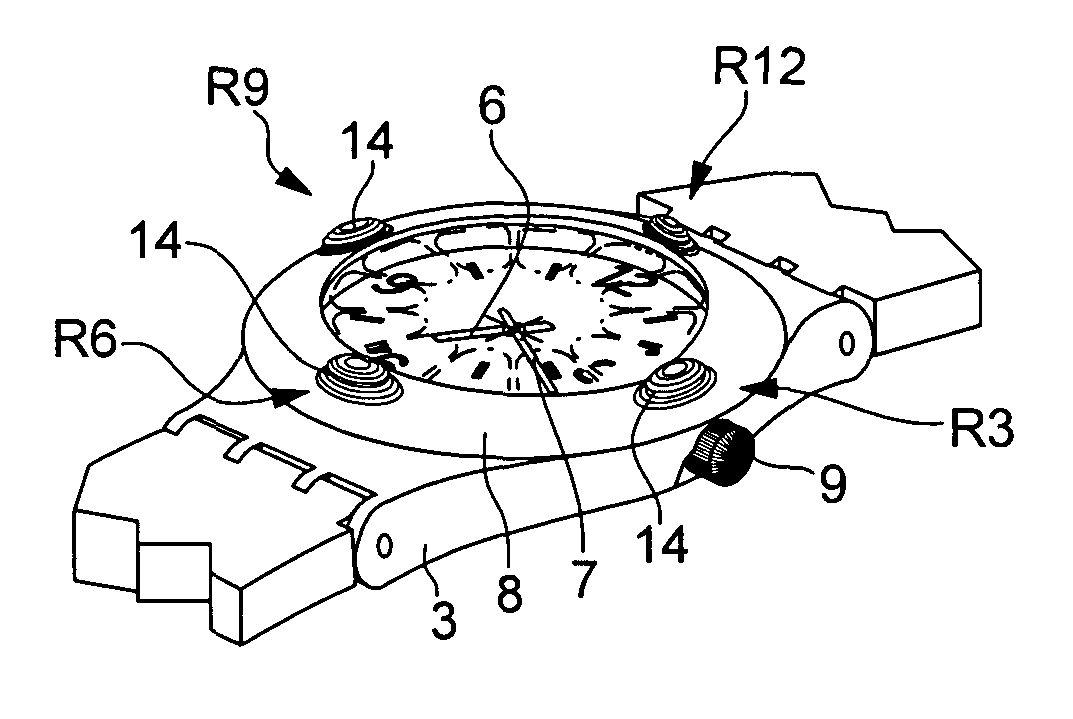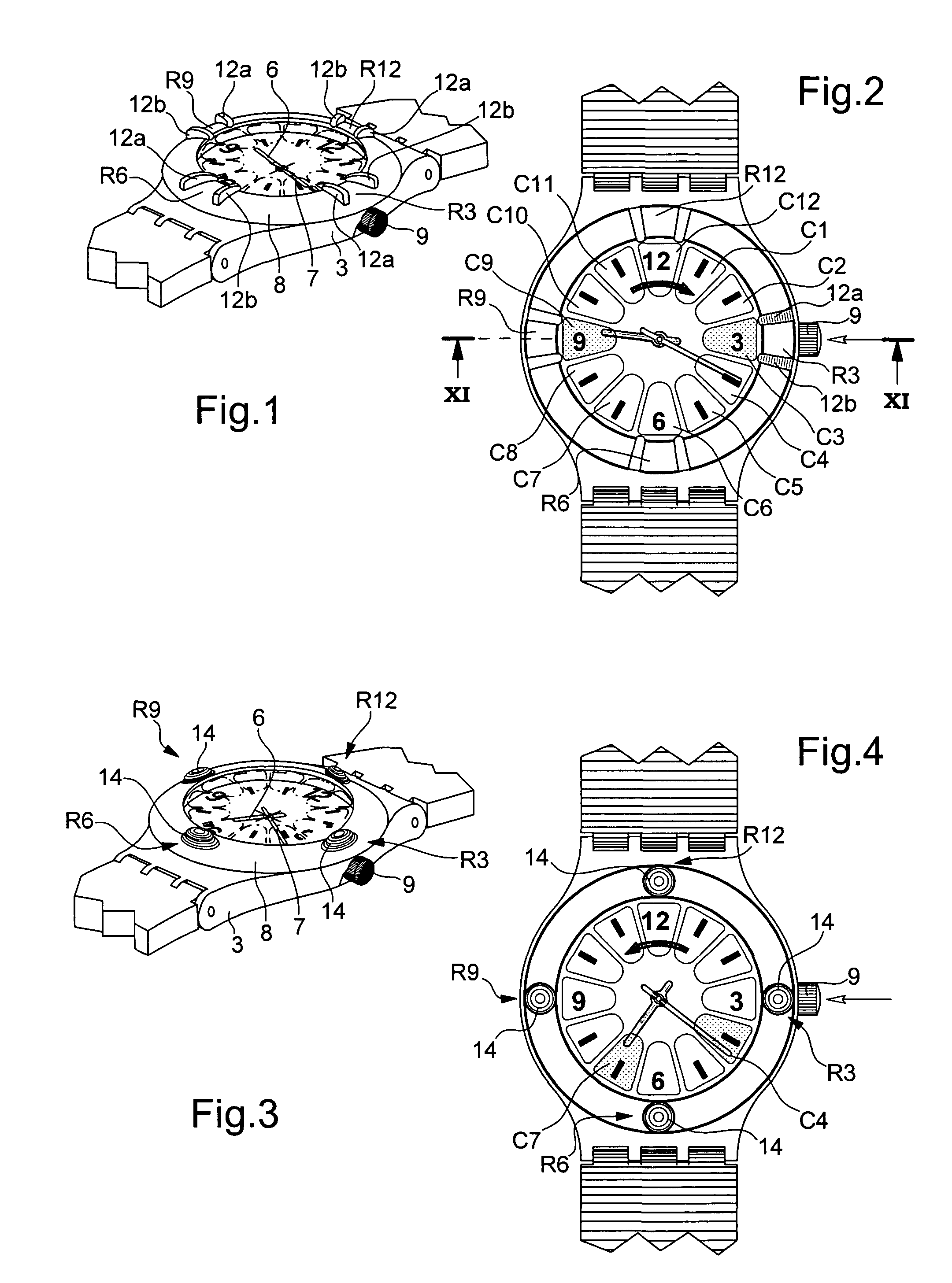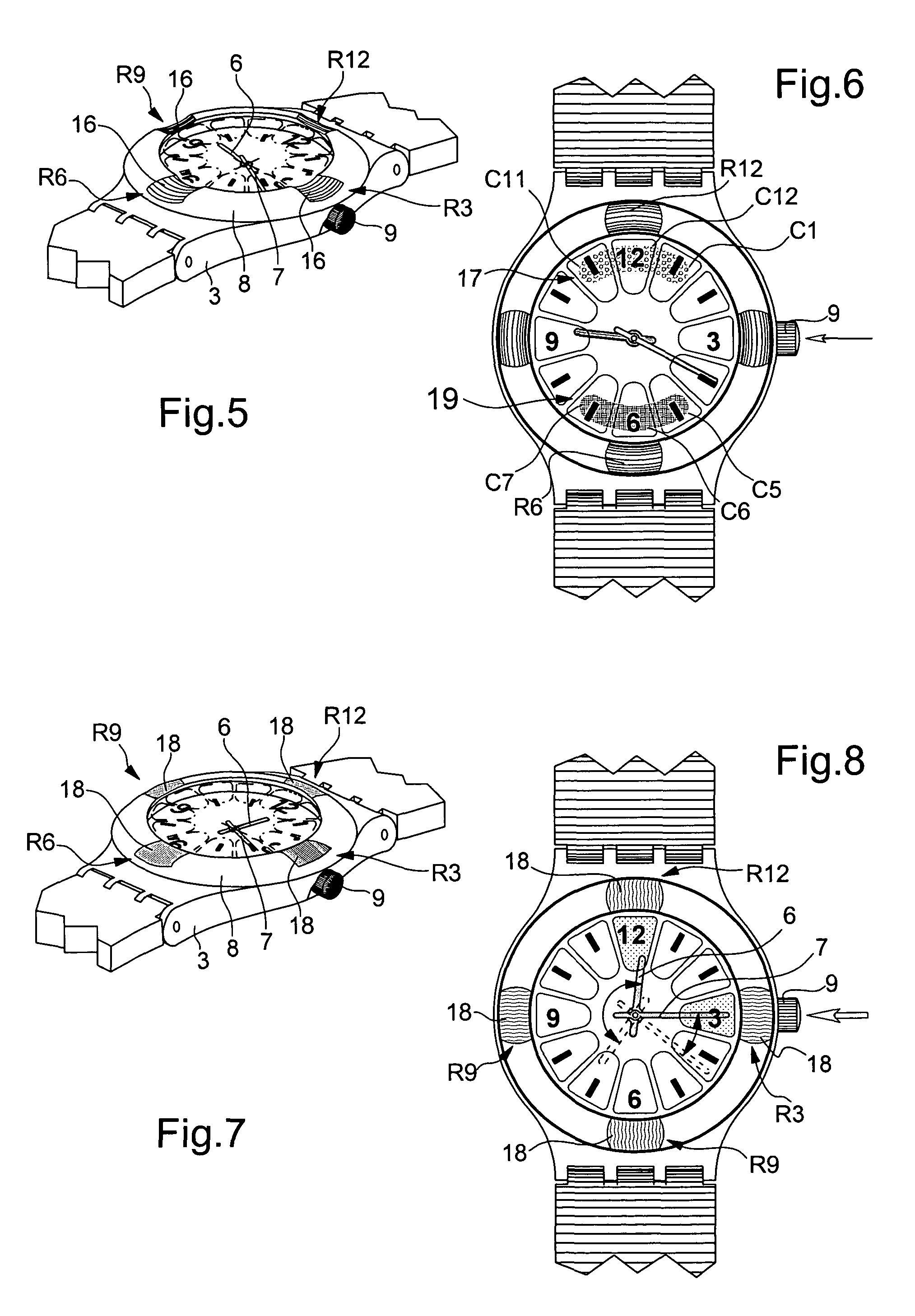Timepiece with touch-type reading and control of time data
a timepiece and touch-type technology, applied in the field of wristwatches, can solve the problems of not being able to learn, requiring non-negligent reading, and still having debatable aesthetic appearance of wristwatches corresponding to the aforecited prior ar
- Summary
- Abstract
- Description
- Claims
- Application Information
AI Technical Summary
Benefits of technology
Problems solved by technology
Method used
Image
Examples
first embodiment
[0024]The position of each sensor, designated generally by Ci, is identified owing to bezel 8 that includes four markings R3, R6, R9 and R12 located at the four time positions 3 o'clock, 6 o'clock, 9 o'clock and 12 o'clock . In this first embodiment, each marking is formed by two bars 12a, 12b in a raised position on the bezel and being spaced at the same distance as the width of the sensor associated with the edge of glass 4. Thus, for example, the user who detects vibrations, with his finger, which he has unknowingly passed over the glass above sensor C3, immediately identifies marking R3 as a result of the two bars 12a, 12b which he feels with his finger on the inner edge of bezel 8, this identification being able to be achieved without any risk of confusion with the bars of the three other markings which are sufficiently far away spatially. The user then knows that his finger was on the 3 o'clock time position. Conversely, if he wishes to select this 3 o'clock time position, he ...
second embodiment
[0032]With reference now to FIGS. 3 and 4, a second embodiment, and the operation of the wristwatch in an “alarm time reading mode” will be described hereinafter.
[0033]In FIG. 3, it can be seen that the four markings R3, R6, R9 and R12 are formed by projections 14, allowing sensors C1 to C12 to be easily identified in the same way as previously indicated. Equally, these projection 14 with smooth transition to the bezel could be replaced by geometric shapes having transitions with sharper angles to the bezel.
[0034]FIG. 4 schematically shows how to read the alarm time, or more exactly how to check an alarm time that has, for example, been set at 07.22, but which has been forgotten. After having exerted a brief application of pressure on the crown, the user runs his finger over the edge of the glass anticlockwise, a manipulation that he can easily memorise as being the opposite manipulation to that carried out to read the current time. This manipulation brings the hands into the positi...
third embodiment
[0035]FIG. 5 shows a third embodiment in which the four markings R3, R6, R9 and R12 are formed by recessed portions 16 in the bezel, as previously contributing to easy identification of the time positions.
[0036]FIG. 6 schematically shows how to switch the alarm on (ON) and off (OFF).
[0037]FIG. 6 shows two bean shaped zones covering three consecutive sensors Ci, Ci+1, Ci+2 namely sensors C11, C12 and C1 for zone 17 corresponding to the ON state and sensors C5, C6 and C7 for zone 19 corresponding to the OFF state.
[0038]In order to switch the alarm to the ON state, the user exerts a brief application of pressure on crown 9 then puts his finger in zone 17, easily identified by marking R12 and holds it without moving in this position. The watch then emits two vibrations indicating that this state has been stored. Likewise, in order to switch the alarm to the OFF state he carries out the same manipulation by positioning his finger on zone 19 at marking R6 and holds it in this position wit...
PUM
 Login to View More
Login to View More Abstract
Description
Claims
Application Information
 Login to View More
Login to View More - R&D
- Intellectual Property
- Life Sciences
- Materials
- Tech Scout
- Unparalleled Data Quality
- Higher Quality Content
- 60% Fewer Hallucinations
Browse by: Latest US Patents, China's latest patents, Technical Efficacy Thesaurus, Application Domain, Technology Topic, Popular Technical Reports.
© 2025 PatSnap. All rights reserved.Legal|Privacy policy|Modern Slavery Act Transparency Statement|Sitemap|About US| Contact US: help@patsnap.com



